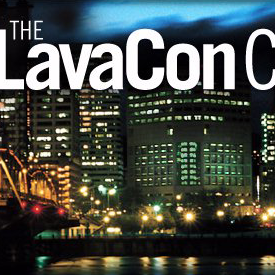 Lavacon 2012, an annual gathering of the content management community, was full of presentations specifically geared towards content curators & strategists and delved into strategy, tools, resources, case studies, and more. Being a front-end developer, I came out of this three-day conference with a new-found respect and understanding of content management, how it relates to the developer community and a perspective on the journey ahead.
Lavacon 2012, an annual gathering of the content management community, was full of presentations specifically geared towards content curators & strategists and delved into strategy, tools, resources, case studies, and more. Being a front-end developer, I came out of this three-day conference with a new-found respect and understanding of content management, how it relates to the developer community and a perspective on the journey ahead.
The event was well organized into specific category tracks that included topics of significant interest to the attendees. The tracks included ‘Project Metrics and Development Team Management,’ ‘Content Strategy and Content Management,’ ‘User Experience and Multi-channel Publishing,’ and ‘Case Studies and Roundtable Discussions.’ Although unable to attend all presentations it was evident the organizer, Jack Molisani, hit the proverbial “nail on the head” in terms of what these folks were looking for.
Many of these topics were new to me, but incredibly interesting in both how they related to content management and what I do as a developer. There were simply too many sessions to identify, but topics included DITA vs XML, authoring tools, content reuse strategies, team management, success measurement, purposing content for multiple outputs (tablets, mobile, ePubs), gamification, video curation, global content strategies and more.
Through my exposure to these presentations, I gained a new perspective on, and a great appreciation for, content strategy, the content strategist and content curators. I suppose I had never really given it enough thought, but theirs is also a complex world of technologies, processes, and terminology with a unique set of challenges and objectives. Like in the developer’s world, the tools they use and the technology that affects them is in continual flux. From how they author it, structure it, make it relatable & desirable, enable it to be re-purposed and indexed, shared and searched, content is complicated.
As a front-end developer, my primary purpose, simply stated, is to package content for distribution in the digital space. I’m typically concerned with user experience, interaction design, load times, mobile optimization, SEO, and so forth. These concerns are customer and client facing, and certainly a priority.
That being said, I will no longer take for granted the content purposed for the products I build. Sometimes I have challenges with the delivery system, the formatting and structure, etc. As it can be in siloed environments, I’ve often viewed these challenges as not directly relating to my workflow and would respond by doing my best to “make it work”. From now on, I will make a conscious effort to engage in the content development process and, if nothing else, gain a deeper understanding for how specific content reaches my screen. Chances are, this will reduce friction and allow for increased collaboration between those responsible for the content and myself.
Speaking of silos, at the Lavacon 2012 Conference I came to the realization the barriers that exist between these specialties isn’t just at the corporate level – it also exists at the industry level. I’ve been to many conferences in the past year, mostly covering the specific terminology, technology, systems, etc. pertaining to web development and digital design. Unfortunately, it is rare to see the developer or designer in presentation learning about the world of content management/authoring (let alone learning how to better coexist).
On the flip side, there did seem to be an effort at this conference to improve and better understand the journey content travels from authoring to deployment. There were presentations discussing the value of reusable content, the benefits of clean content structuring, multi-screen content delivery and tools that enhance content deployment. Additionally, I heard about how content relates to HTML5, the mobile web, app development, ePubs, and the steps content managers can take to improve the delivery of their content into these spaces – like removing local formatting at all costs.
Clearly, the conversation needs to continue. Going forward, my hopes are that both the developer community and the content community share knowledge so we can begin to talk the same language.
In summary, Lavacon 2012 was a valuable experience and, although there is an evident knowledge gap between development and content management, I recommend anyone working in these fields attend next year’s event. Across both specialties, let us work together to improve collaboration, shared knowledge, and systems that will allow better cooperative leveraging of technology and tools. With my enhanced respect and understanding of the content management world, I will do my part to continue this dialog. Please feel free to connect with me on twitter (@joesnellpdx) and reach out with ideas and questions.
The final day of the conference, two videos were released from the May Mobilism 2012 conference that directly relate to this topic:
For a Future Friendly Web by Brad Frost
The Essence of Content on the Future Web by Lyza Danger Gardner
